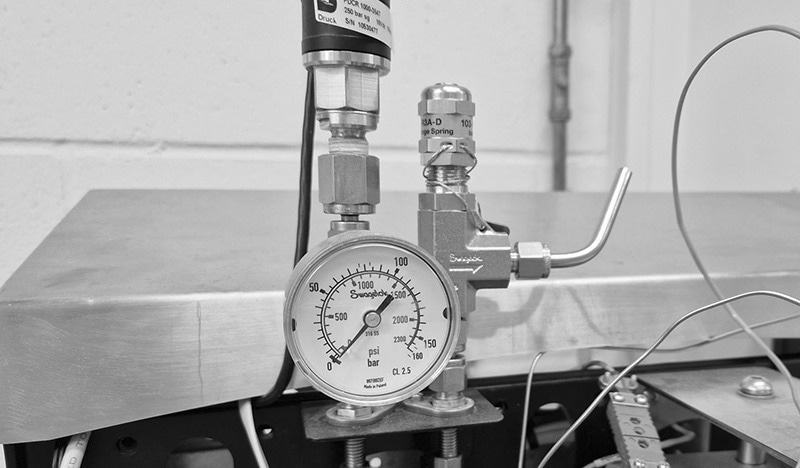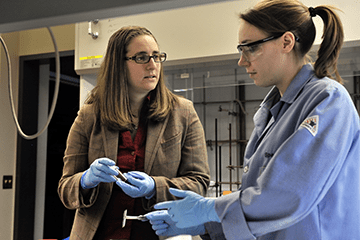H.E.L develops scientific instruments and software with high-efficiency capabilities that optimize bench-level efficiency, productivity, and safety. The company’s equipment and software solutions are making exciting contributions to the quality of real-world science.

Image Credit: H.E.L Group
Chemists from Virginia Tech, led by Dr. Amanda Morris, are applying H.E.L’s DigiCAT, a high-pressure catalysis system, to provide innovative solutions for developing artificial photosynthesis techniques to transform captured carbon dioxide into viable products, such as alternative fuels and plastics.
This article will share insights into how Dr. Morris’s team uses catalysts in action.
Catalysts can Surprise You
When redirecting CO2 emissions to produce alternative resources for industry, the high molecular stability of carbon dioxide presents a challenge. To combat this, viable catalysts are needed to make processes more economically viable and easier.
However, the reality is that vast amounts of energy are needed to break down CO2.
Metallic copper is the most efficient catalyst for CO2 reduction. A typical feature of a catalyst is that it must withstand repeated use and have a high turnover number, defined as the number of a substrate’s molecules that can be converted by an enzyme’s active site when the substrate saturates the enzyme.
Industrial catalysts require an extremely high turnover number in the millions to be economically viable. Dr. Morris’s Virginia Tech group is developing improved catalysts to replace metallic copper with a molecular structure. However, the current turnover numbers are limited to the tens rather than millions.
Although this aspect of the catalytic development is far from perfect, other benefits of the catalysts, Dr. Morris’s group is working on mean that they are adequate to persist with.

Image Credit: H.E.L Group
Measuring Those Mixed Materials
Considering metallic copper, while it is a very energy-efficient catalyst for carbon dioxide reduction, copper itself is non-selective and can generate up to 36 products in a mixture. This presents a significant engineering challenge as these products must be separated and purified.
The molecular approach undertaken by Dr. Morris’s team enables them to select a single product despite the low turnover numbers of current catalysts.
Characterizing surface chemistry during reactions is a key challenge across the catalysis field. This reaction occurs at the catalyst's surface and can involve multiple intermediaries before forming the final product.
The surface of a catalyst is a complex environment, and currently, there is a lack of scientific techniques to probe the surface’s molecular chemistry. Copper metal, for example, has a heterogenous surface, with the atoms forming at the surface bonding to the bulk of the copper in different ways.
This means that atoms have differing availability for catalysis and offer potentially varying catalytic pathways. At an atomic level, researchers must understand how many heterogenous catalysts, including copper, function for CO2 reduction. New catalysts must be trialed and cannot simply be designed on paper.
Heterogenous catalysts usually consist of metallic catalyst nanoparticles on a support, such as an oxide. Due to their small size, nanoparticles have an ideal surface-to-volume ratio and can maximize the catalyst component’s surface area. This is useful as all catalysis occurs at the surface of materials.
Nanoparticles are always kept in place by the support, contributing to high turnovers. Dr. Morris’s group uses metal-organic frameworks (M.O.Fs), the molecular equivalent of the nanoparticle support structure. Copper nanoparticles are replaced by copped atom nodes connected by ligands (organic links)
These catalytic ligands form extended 3D solid-state polymer structures or synthetic handles that improve the energetics and effectiveness of catalysts. Perhaps most importantly, a centrifuge can separate the M.O.F.s from a solution.
These M.O.F.s increase the impact of copper as a molecular catalyst, offering an optimal combination of selectivity and stability.
Artificial vs. Natural Photosynthesis
The M.O.Fs used by Dr. Morris’s team are highly useful in replicating nature’s relationship with CO2 during artificial photosynthesis to repurpose CO2 for manufacturing innovative green fuel.
Plants draw electrons from water, which are used to reduce carbon dioxide, allowing them to create both short-term energy stores and starches and sugars for longer-term energy storage and the production of structural components. The only by-product of this process is oxygen.

Image Credit: H.E.L Group
A molecular catalyst typically fails after about 30 minutes when working in a lab to oxidize water by removing electrons. In contrast, the M.O.F catalysts used by Dr. Morris’s group have ran the test for six hours, and the team feels that this could be extended.
Multiple catalysts currently available make highly useful carbon monoxide (CO) gas through several chemical processes. CO is made by removing one oxygen atom from CO2, precisely what natural photosynthesis does. In a cell, CO is converted into other compounds, usually carbohydrates.
However, the selectivity and efficiency of these catalysts present a challenge – how would the required product be produced at a suitable purity efficiently?
Dr. Morris expects that a mix of catalysts would most likely be needed rather than a single compound that can replicate natural photosynthesis. These catalysts would take on a specialized part of the entire process. This is similar to using a range of proteins during plant photosynthesis.
Using this mixed catalyst approach potentially enables the production of a range of higher-value compounds to be produced using artificial photosynthesis.
Sourcing the Right Solution
There is much speculation within science communities about the ideal solution for artificial photosynthesis. For Dr. Morris’s team, water is still the most popular solution choice, combined with altering pH levels to give a range of possible outcomes.
Water oxidation is much easier at basic pH. Altering it to operate at acidic levels will make it easier to reduce CO2, but this can introduce additional and undesired reactions.
For this reason, the team finds using pure water from the outset preferable, acidifying or basifying the system and reassuring them to know if something works before considering solution conditions.
At ambient pressure, carbon dioxide dissolves in water very poorly. To combat this, the team often works with pressurized systems to increase the amount of dissolved CO2.
Typically, room temperature or as low a temperature as possible is preferred, with the maximum elevated temperatures staying around 60 oC. Pressure conditions are closely monitored at all temperatures.
Catalytic Futures for a Greener Planet
Using catalysts to reduce carbon dioxide is highly promising, but each step forward is currently hard-won. Combining all stages by catalysts in a single step is a primary aim of the scientific community.
Scientists can bring them together in cascaded catalysis systems until that is possible to create superior end products. With this approach, a catalyst can react and interface with another, or even a third catalysts, in a joined-up chain of activity.
Not all catalysts work under the same conditions, meaning there is a problem with unifying them.

This information has been sourced, reviewed and adapted from materials provided by H.E.L Group.
For more information on this source, please visit H.E.L Group.